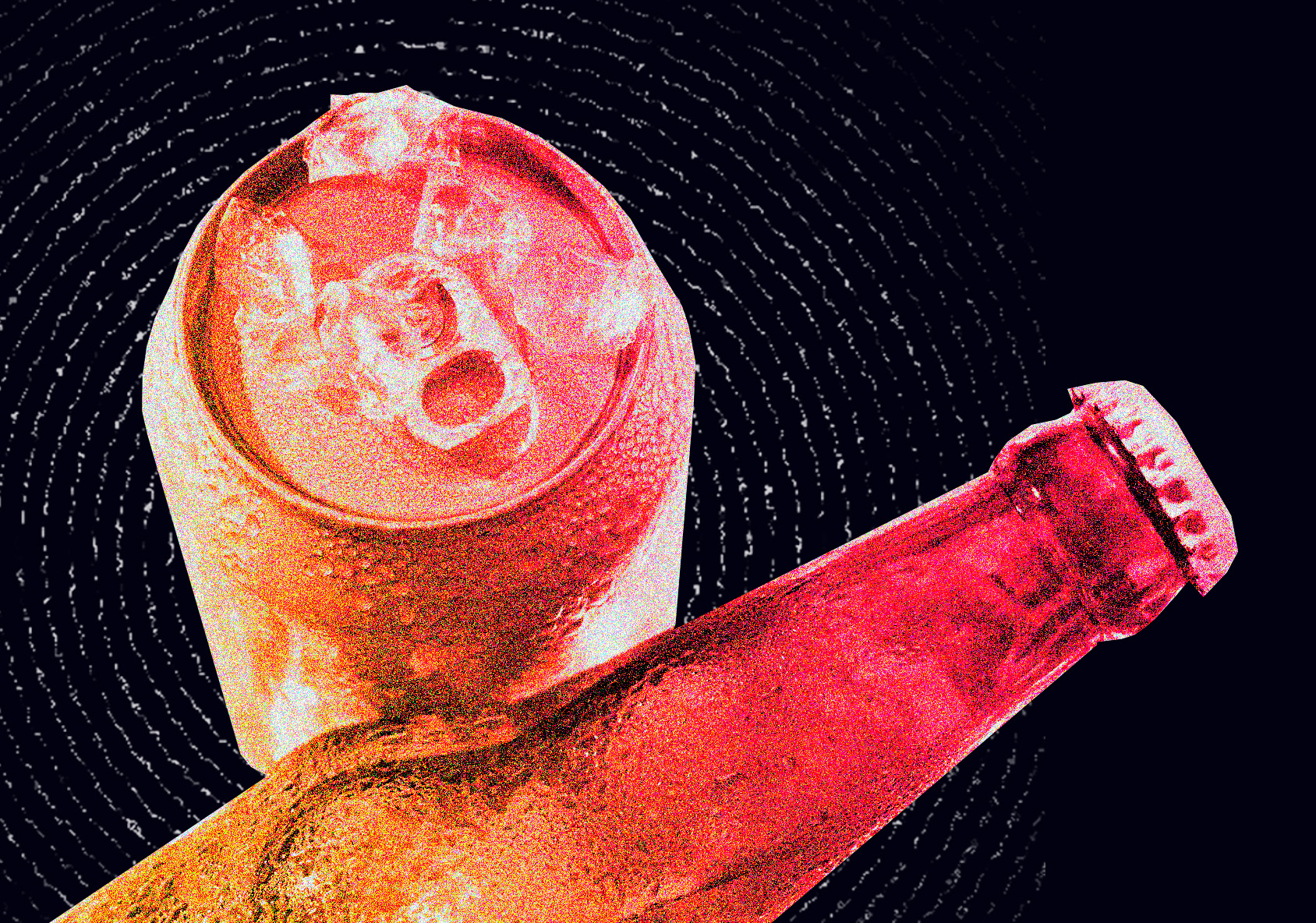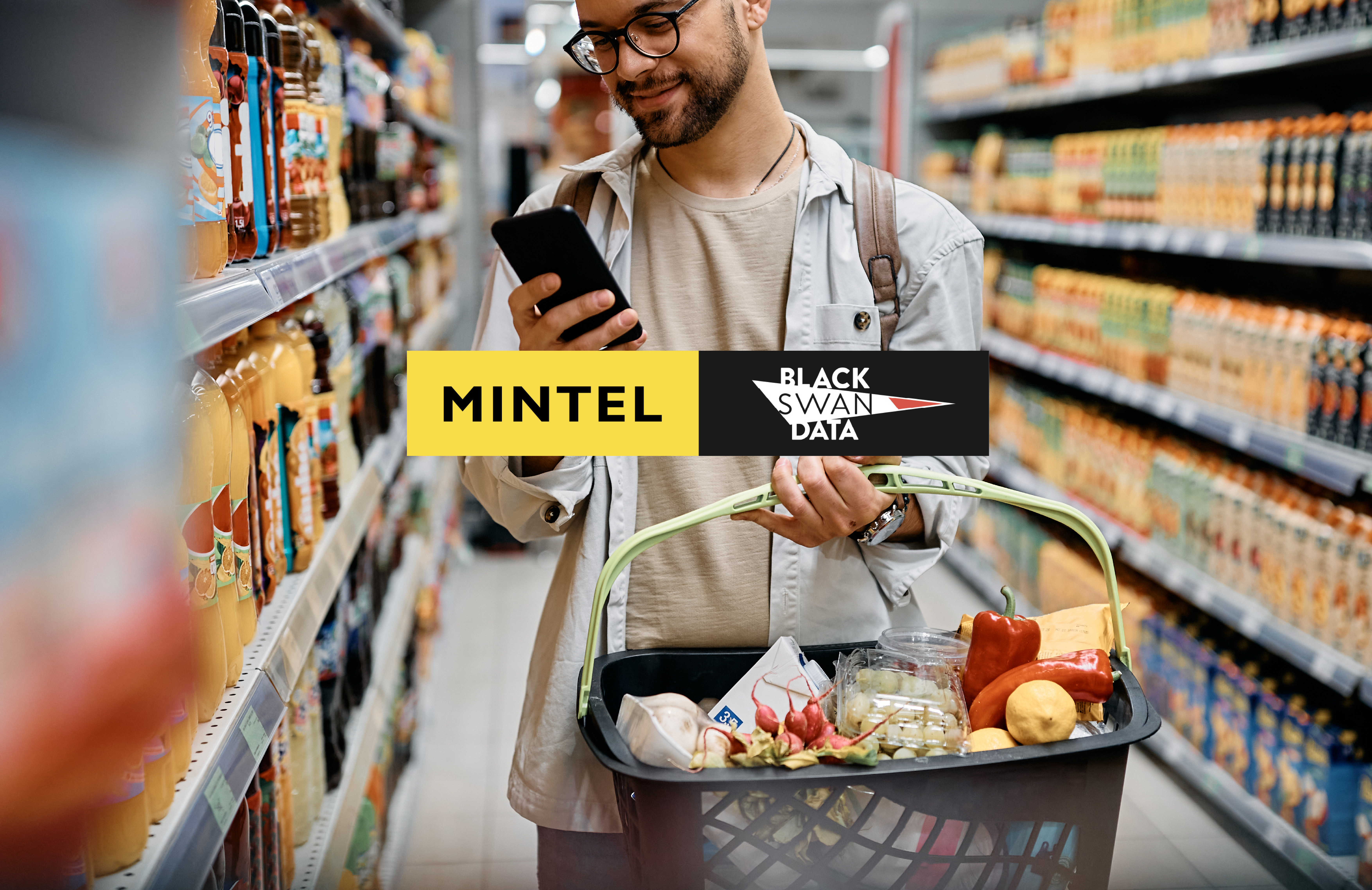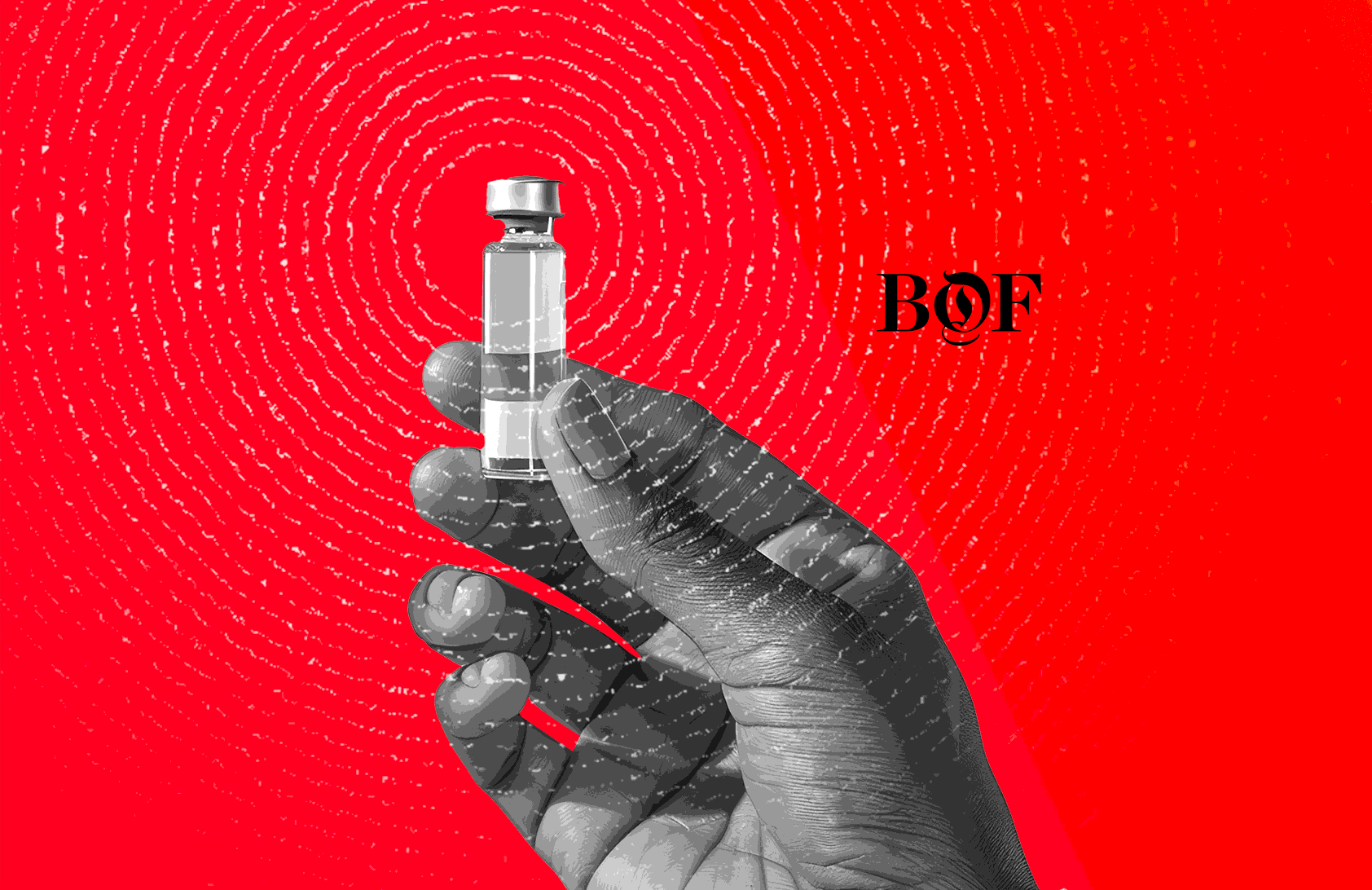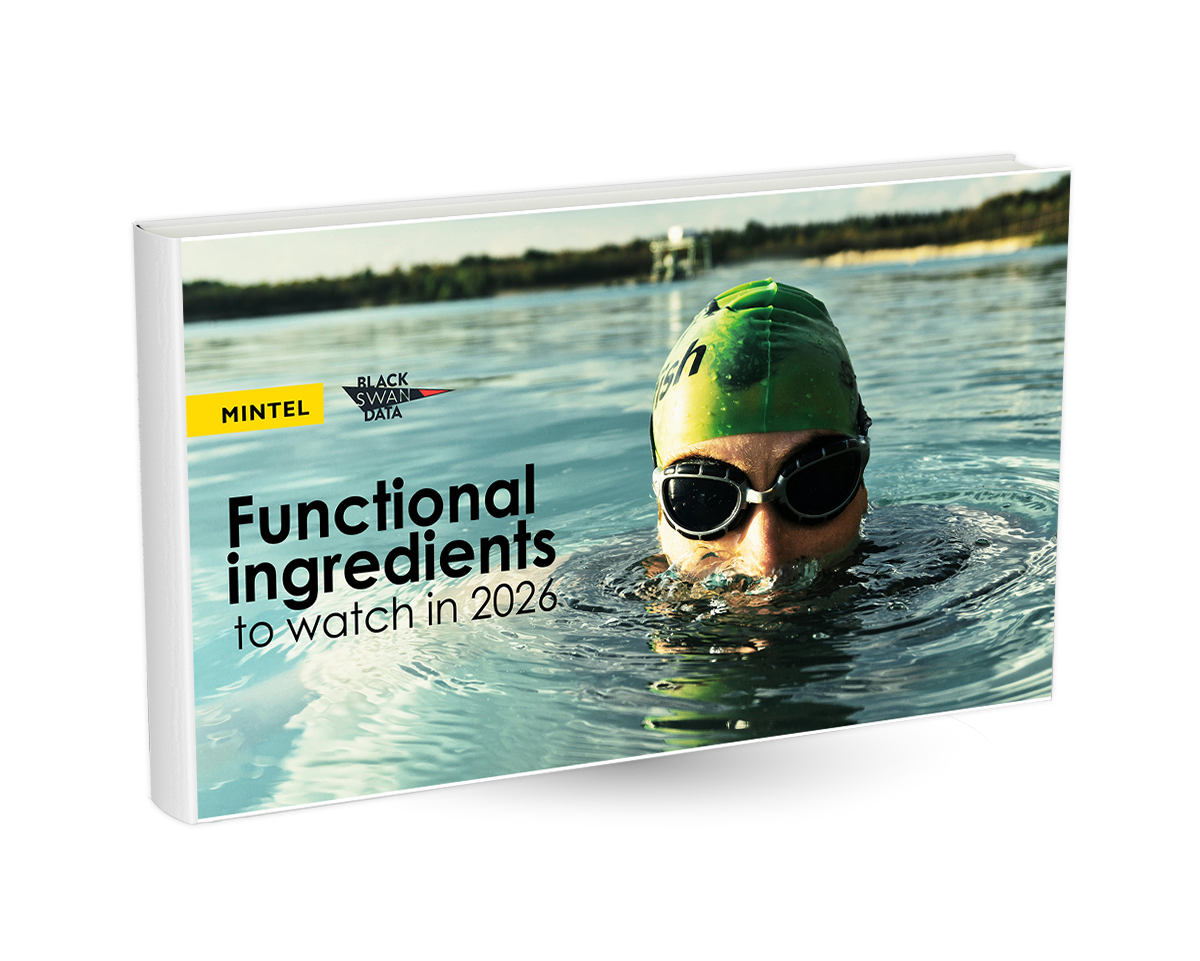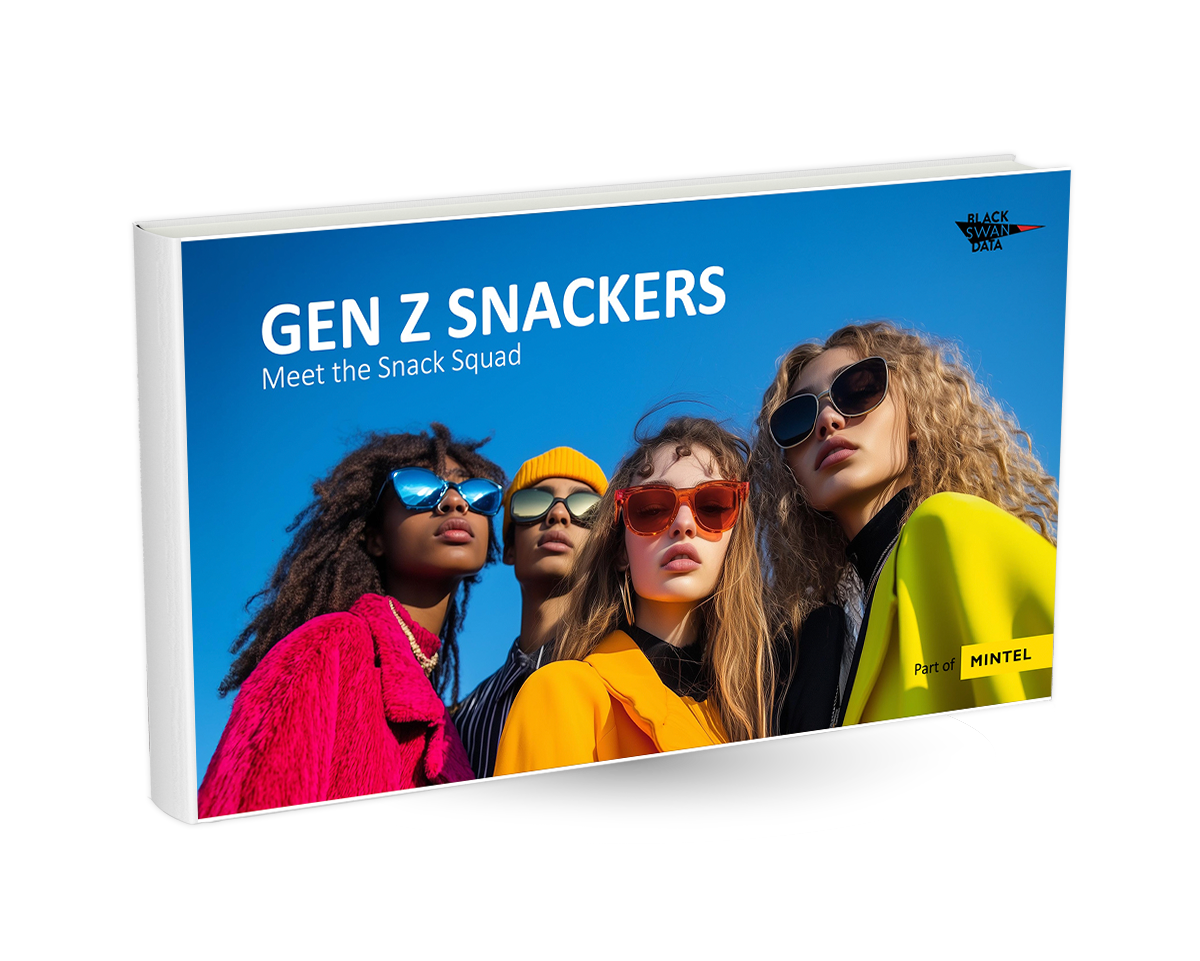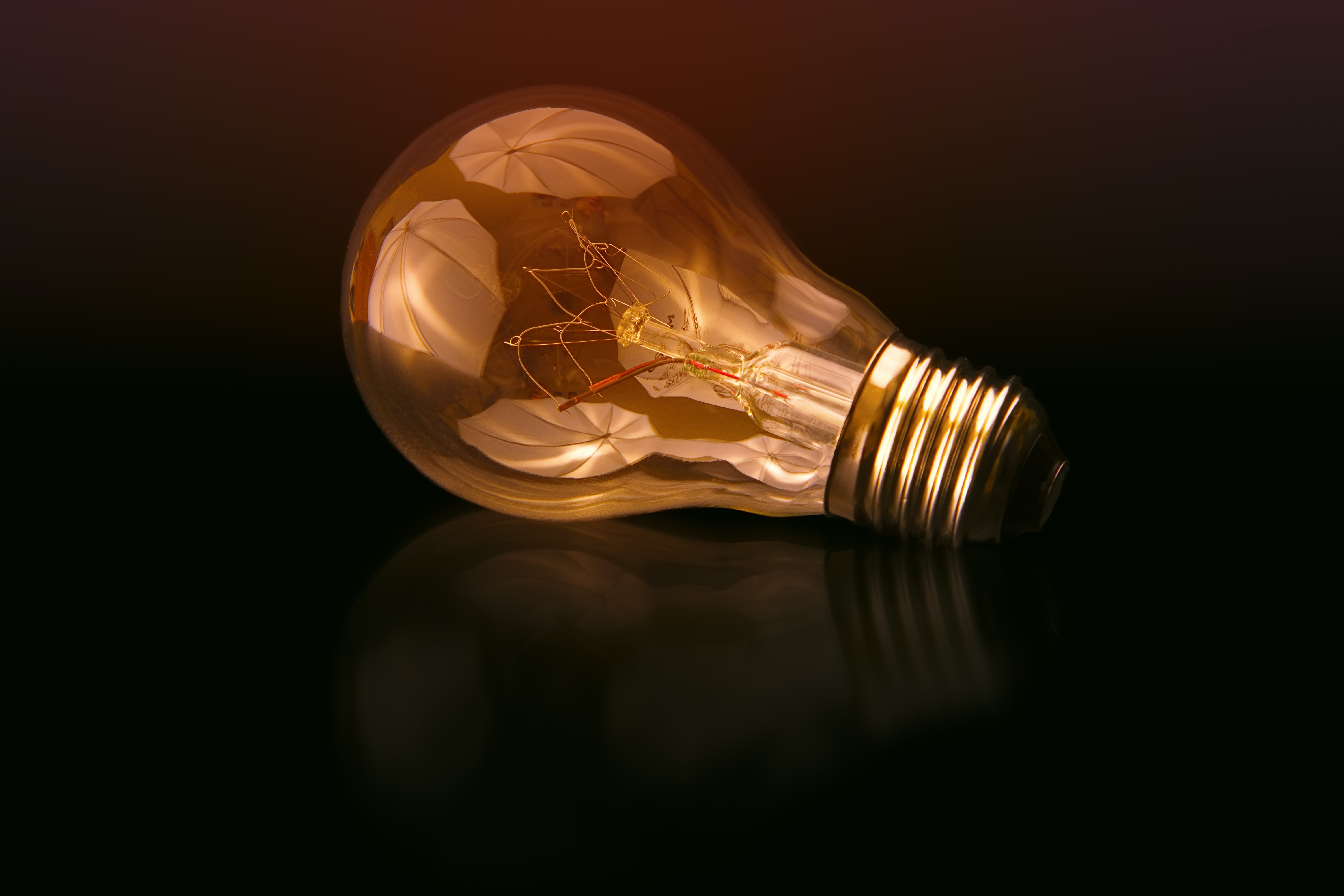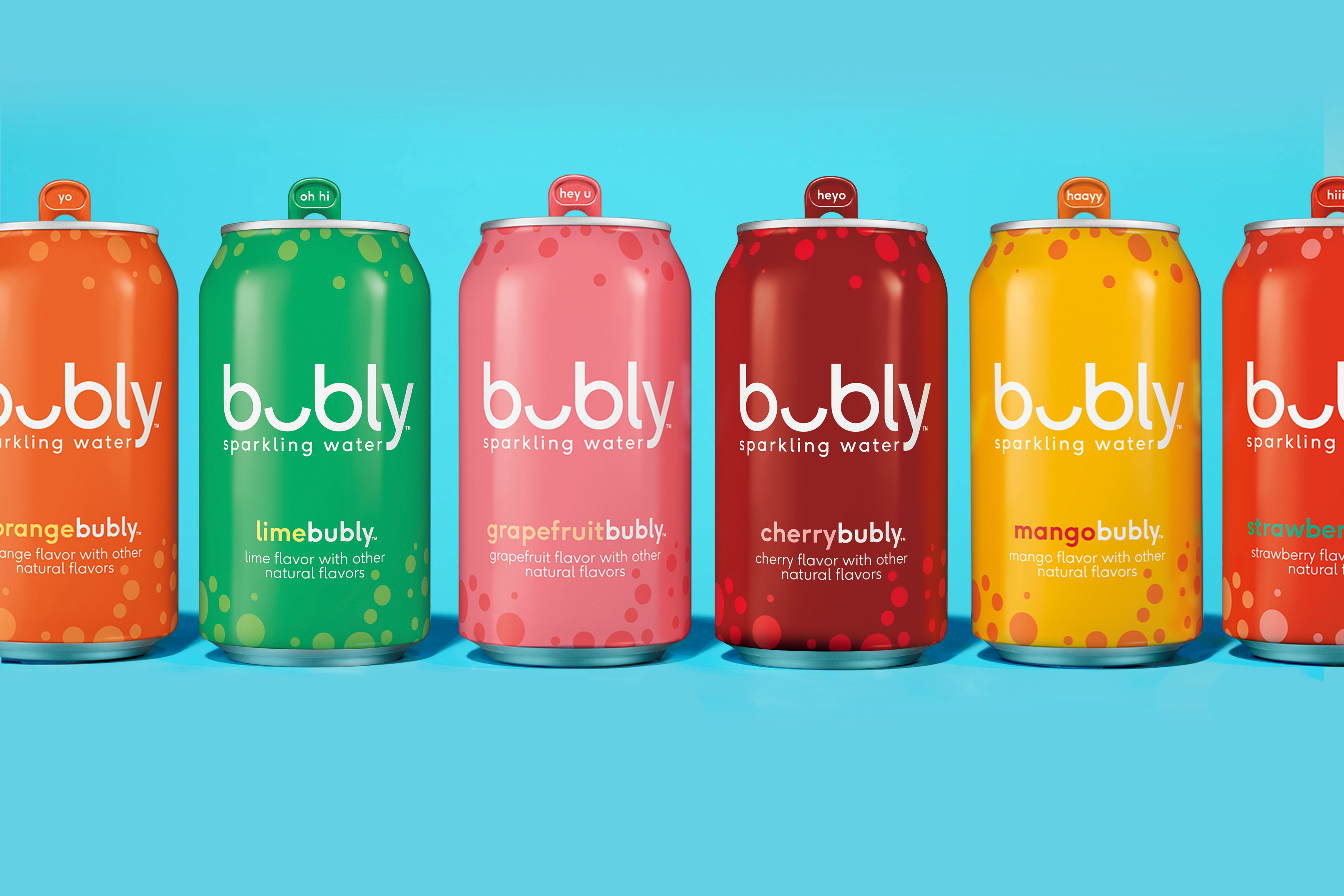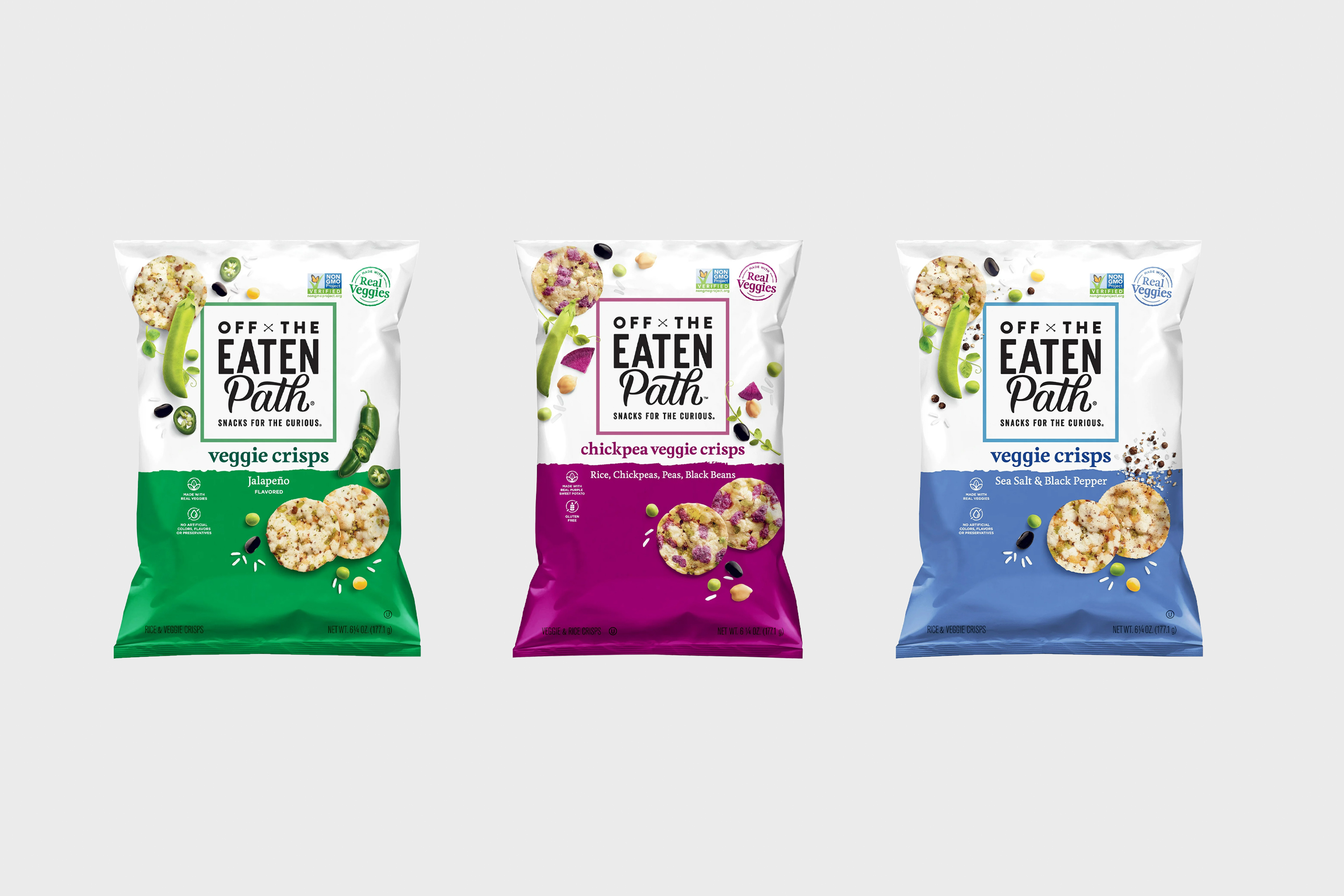What can millions of conversations tell us about the future of booze? That was Twitter’s brief when they asked Black Swan to create a
2022 Birdseye Emerging Trends report. If you haven’t seen it yet, you’re missing out! You can find a short summary about it
HERE.
How did we do it?
Every day, consumers are sharing their thoughts, behaviours, delight factors and frustrations about the products they use on platforms like Twitter. This powerful source of behavioural data can deliver a game-changing view of consumers and trends for marketers and product innovators.
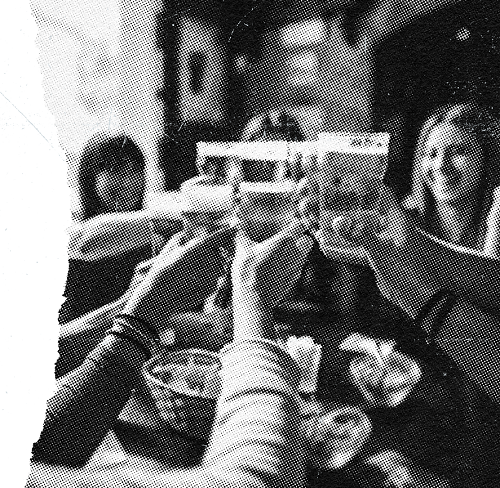
However, making sense of this messy, unstructured, human data is far from easy. Fortunately, at Black Swan Data, our team of data scientists, engineers and consumer insight experts have developed AI and Machine Learning technology that can scan and analyse millions of social data points to surface trends and accurately predict their future trajectory. Here’s how….
Filtering what’s relevant
Once we’ve picked a product consumption area (like Beers & Ciders), we need to ensure that the discussions we take into account are relevant. For example, a “drink” is not always Alcoholic, and common words used to describe products (like Hoppy, Crisp, Caramel) are likely to be mentioned outside of their use in AlcBev. Irrelevant content and noise like this are removed from the data (typically >60% of the original data), all while clustering analysis and Natural Language Processing tools take on the task of structuring what remains into a huge map of category relevant, consumer-defined topics. In this instance, we were left with 36 million+ consumer conversations within the Beer & Cider and Spirits & Liquor categories for the US market, between Sep ‘19 and Sep ‘21. Within this dataset, 17,000 consumer-defined topics were identified in total, and each topic’s conversation volume was plotted over a two-year timeframe to analyse how it was trending (thus removing any seasonal bias).
Analysing the Data
Trending topics, or ‘trends’, are then grouped with similar trends to focus our analysis on a particular area of the conversation. We call these topic groups ‘lenses’ and for this dataset our lenses included: Themes, Product Types, Ingredients, Tasting Notes, Brands and Cocktails. By grouping into Lenses we can start to run powerful analysis about how each trend is performing relative to similar trends. For example, we can map all 2,000 Product Type trends by their maturity on a trend adoption curve. This enables us to understand if Rice Lager is a Dormant, Emerging, Growing, Mature or Declining trend (it’s in the Growing maturity stage BTW). Now we know
what’s increasing in relevance, we can use different metrics to understand ‘
why?’. We use a variety of factors to analyse each trend including its volume, historic growth rate, sentiment, forecasted growth and the strength of association with other trends in the dataset. For instance, Rice Lager is strongly associated with being a Palate Cleanser and has Tasting Notes of Grassy, Crisp and Light-Bodied. This analysis, all derived automatically from tweets or posts, indicates that Rice Lager is consumed because of its light flavour profile and most likely alongside food.
Predicting with accuracy
Finally, we apply our TPV (Trend Prediction Value) algorithm which ranks and prioritises every trend by its forecast growth trajectory and has an average 89% accuracy six-months into the future. By giving every trend a prediction score, analysts and managers can quickly compare trends and determine focus areas. This combination of being instantly able to decode
why trends are growing with a scientific prioritisation of the trends that will grow fastest in the future, helps build powerful insight and innovation capabilities for brands looking to stay ahead of the curve in their marketing and innovation strategies.
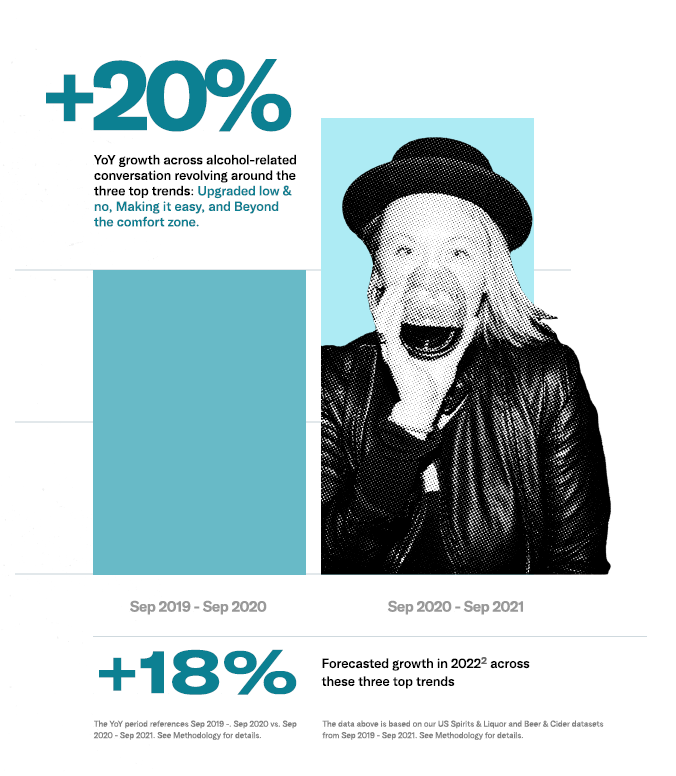
Translating the Findings
For our grand finale, the hundreds of emerging trends we found were prioritised and synthesised into three key, industry-wide growth territories.
#1 Upgraded Low & No – Why are no- & low-alcoholic beverages in need of an upgrade?
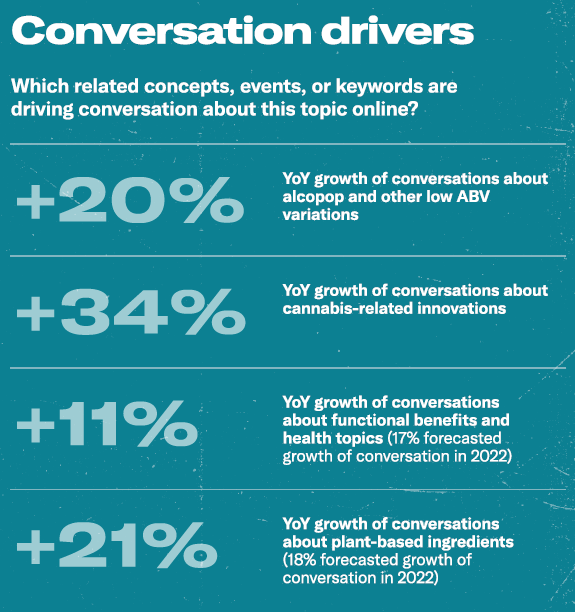 #2 Making it Easy
#2 Making it Easy – Why are consumers turning to ready-to-drink formats?
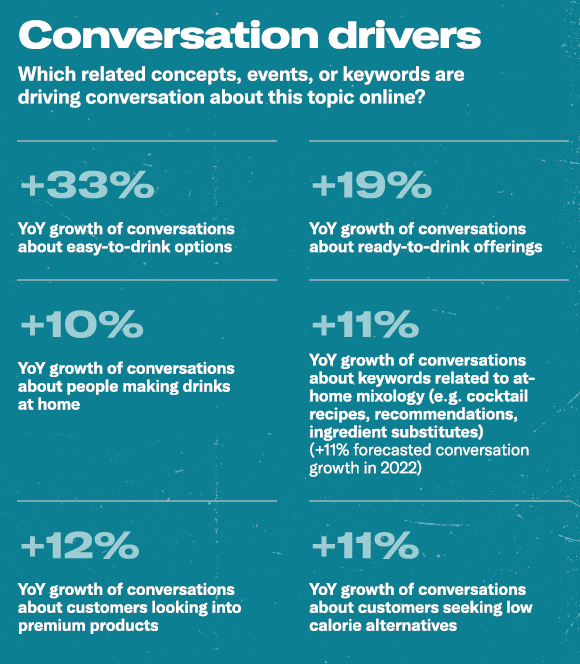 #3 Beyond the Comfort Zone
#3 Beyond the Comfort Zone – Why are authentic local brands and international flavours on the rise?
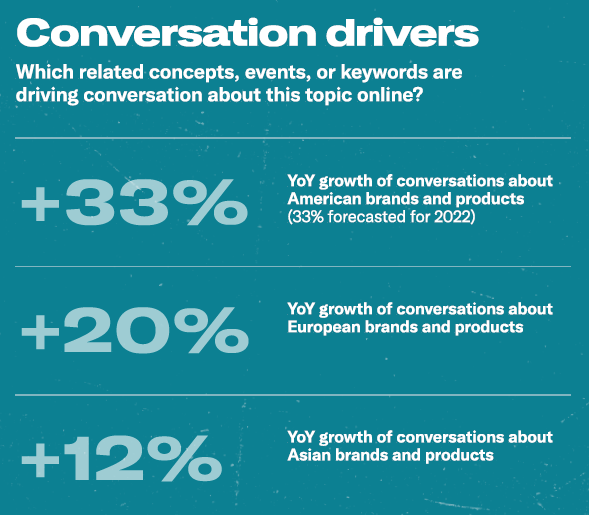
You can read all about them
HERE.
About TRENDSCOPE
The above analysis was performed using
TRENDSCOPE, our industry leading SaaS tool that enables users to harness the power of social trend prediction against their key insight and innovation jobs to be done. If you’d like to learn more about
TRENDSCOPE, the industries and product categories we operate in, or how we could help you predict the next big trend, please don’t hesitate to get in contact.

